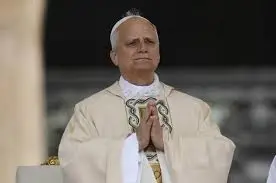‘I am Roman!’: Pope Leo XIV declares as he completes formalities to become bishop of Rome

In a moment full of meaning, Pope Leo XIV declared, “I am Roman!” as he finished the formal ceremonies to become Bishop of Rome. The event, held at the Vatican, marked his official start as pope. This statement demonstrated his strong connection to Rome, the spiritual center of Catholicism for almost two thousand years.
Honoring a Long Tradition
The phrase “I am Roman!” carries deep significance because it links Pope Leo XIV to Saint Peter, the first Bishop of Rome and the Church’s foundation. Every new pope steps into Peter’s role, guiding the Church and its followers. By saying this, Pope Leo XIV showed his respect for this sacred history.
During the ceremony, ancient rituals that have marked papal successions for centuries were performed. He took an oath of loyalty to the Church and received the papal pallium, a woolen vestment symbolizing his pastoral authority. Moreover, he was given the Ring of the Fisherman, representing his role as Peter’s successor, who was once a fisherman.
The Role of Bishop of Rome
The title “Bishop of Rome” holds a central place in Catholicism. While the pope leads the global Church, this title connects him directly to the local Roman community. In fact, the bishopric of Rome is the Church’s heart and a symbol of unity for over a billion Catholics.
For Pope Leo XIV, being Bishop of Rome means more than leading the Church worldwide. It also means caring for the people of Rome and acting as a bridge between the Church’s ancient traditions and its future.
A Powerful Moment
Attendees described the ceremony as both solemn and hopeful. With a clear and confident voice, Pope Leo XIV declared his Roman identity. Cardinals, Vatican officials, and guests responded with respectful nods and applause.
Known for his friendly nature and deep knowledge, Pope Leo XIV shared his vision for the Church, focusing on mercy, renewal, and outreach. He emphasized the need for the Church to engage with the modern world while holding on to its roots.
Facing Modern Challenges
Pope Leo XIV’s rise comes at a challenging time for the Church, which is confronting scandals, cultural shifts, and changing expectations. His strong Roman identity offers stability amid these trials.
He promised to serve both Rome’s citizens and Catholics worldwide. This dual mission requires preserving tradition and embracing needed reforms. Therefore, many expect him to continue improving transparency within the Vatican and to encourage dialogue across religions and cultures.
A Global Role with a Roman Heart
Historically, popes who deeply connect with Rome have left lasting impacts. Hence, Pope Leo XIV’s focus on his Roman identity may signal a papacy that strengthens the Church’s role in world affairs.
Furthermore, he plans to address urgent issues such as climate change, social justice, and peace. These priorities reflect concerns shared by many people, Catholic and non-Catholic alike, who look to the Vatican for moral leadership.
Key Moments in the Ceremony
Several parts of the ceremony stood out:
- The Oath of Fidelity: Pope Leo XIV pledged loyalty to the Church’s teachings and leadership.
- The Papal Pallium: This woolen garment symbolizes his role as a shepherd of the faithful.
- The Ring of the Fisherman: This iconic ring links him to Saint Peter and represents his authority.
Together, these elements combine centuries of tradition with deep spiritual meaning.
Looking Ahead
Pope Leo XIV’s statement, “I am Roman!”, will likely guide his papacy. It reminds everyone that the pope’s role is to care for faith, tradition, and people.
For Romans, this moment confirms their city’s special place in the Church. Meanwhile, for Catholics worldwide, it is a reminder of the Church’s lasting legacy.
Although the future holds many challenges, Pope Leo XIV’s clear embrace of his Roman roots sets a hopeful tone of respect and renewal.






